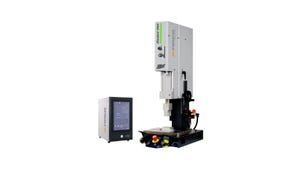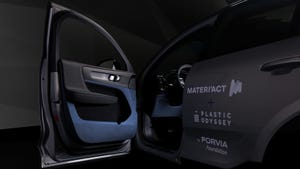May 1, 2005
The role of additives in plastics processing has never been more critical than in this time of rising resin prices and tight supplies. Additives can do more than just add new properties to commodity materials. They can help processors add value to a customers'' products.
Adding value has never been tougher," says Ron Babinsky, business manager for Townsend''s Polymer Services & Information Inc. (Houston, TX), "yet it''s all about what value can you add to what you do." Babinsky gave the keynote address at Additives 2005, April 2 to 6 in New Orleans, LA.
Babinsky notes that using additives can help processors develop high-value-added niches that can in turn produce better profit margins and secure customer relationships.
Additives are being developed to help processors reduce costs and offer alternatives, such as clarified PP, which is now an alternative to PET in bottles. "The additive companies are moving toward value creation," Babinsky says. "They are engaged in selective new-product development-products that offer lower loading levels and higher processing cycles, which in turn lowers costs to the next guy down the chain."
New additives are being developed to address a range of requirements from a variety of industries. Here are some highlights of where the action is:
Wood polymer composites (WPC) Additives to prevent mildew, fungus, termites, and other problems. Class action lawsuits against WPCs are making this industry sit up and take notice. Bill Crostic of WC Consulting Inc. (Lawrence, KS), notes that the WPC industry is quickly finding out that anti-microbials are critical."These microbials eat the wood out of the core plastic leaving people with a foam plank," he says in his presentation at Additives 2005.International Specialty Products (Wayne, NJ) offers a variety of products to treat WPCs to extend product life and broaden protection claims. The company''s industrial biocides offer protection of wood-natural fiber composites used in decking, roofing, windows, doors, garden structures, patio furniture, railing, and fencing. Ciba Specialty Chemicals Corp. also offers a range of products to prevent staining and microbiological growth in WPCs. It is often difficult to distinguish between chemical staining and fungal staining in WPC decking.Automotive David R. Bauer, Materials Research & Advanced Engineering for Ford Motor Co. (Dearborn, MI), says that additive goals for automotive interiors include minimizing warranty costs over three years, meeting a 90% customer satisfaction rating for vehicles over 10 years, and achieving no failures of critical function out to 15 years. Multiwall carbon nanotubes are being used as a conductive additive not just for engineering thermoplastics but more recently in thermosetting fluoroelastomers to make O-rings for automotive fuel systems. "There''s a growing mandate from the car manufacturers for a continuous conductive pathway in the fuel system from fuel tank to engine," says Mark Hyman of Hyperion Catalysis International Inc. (Cambridge, MA).Medical Michael Wiskowski, strategic technology leader, GE Healthcare Technologies, says there is a laundry list of things additives can help achieve. Those include lipid resistance in components for drug infusion therapy; resistance to radiation, ethylene oxide, and autoclave sterilization of reusable components without losing material properties; bio-compatibility; antimicrobial agents, and Restriction of Hazardous Substances (RoHS) rule compliance; color stability, particularly for the large MRI systems, CT scanners, and x-ray equipment that are exposed to UV light constantly; chemical resistance, dimensional stability, and more. Significant are those additives that can be used in the large thermoformed components GEHC Technologies purchases. Electronics The increased use of extremely fine (8 to 11 µm in diameter) steel fibers for EMI and antistatic purposes in plastic resins as an alternative to carbon fibers. Says Doug Watson of Bekaert Fiber Technologies (Zwevegem, Belgium), "Because of the low weight percent needed to provide electrical conductivity, and even much lower volume percent in the plastic resin, the steel fibers have minimum effect on mechanical, impact, and shrinkage properties." Polymer-clay nanocomposites are playing an increasingly vital role in flame retardancy (FR) for plastics. Benefits include acting as a barrier formation, providing enhanced FR properties, elevated heat distortion temperature, and improved mechanical properties, notes Charles A. Wilkey of the Department of Chemistry at Marquette University (Milwaukee, WI). "However, nanocomposites are just another tool for FR, not the final answer," he notes. "Clay can act as an anti-plasticizer in some cases."Clare Goldsberry [email protected]
You May Also Like


